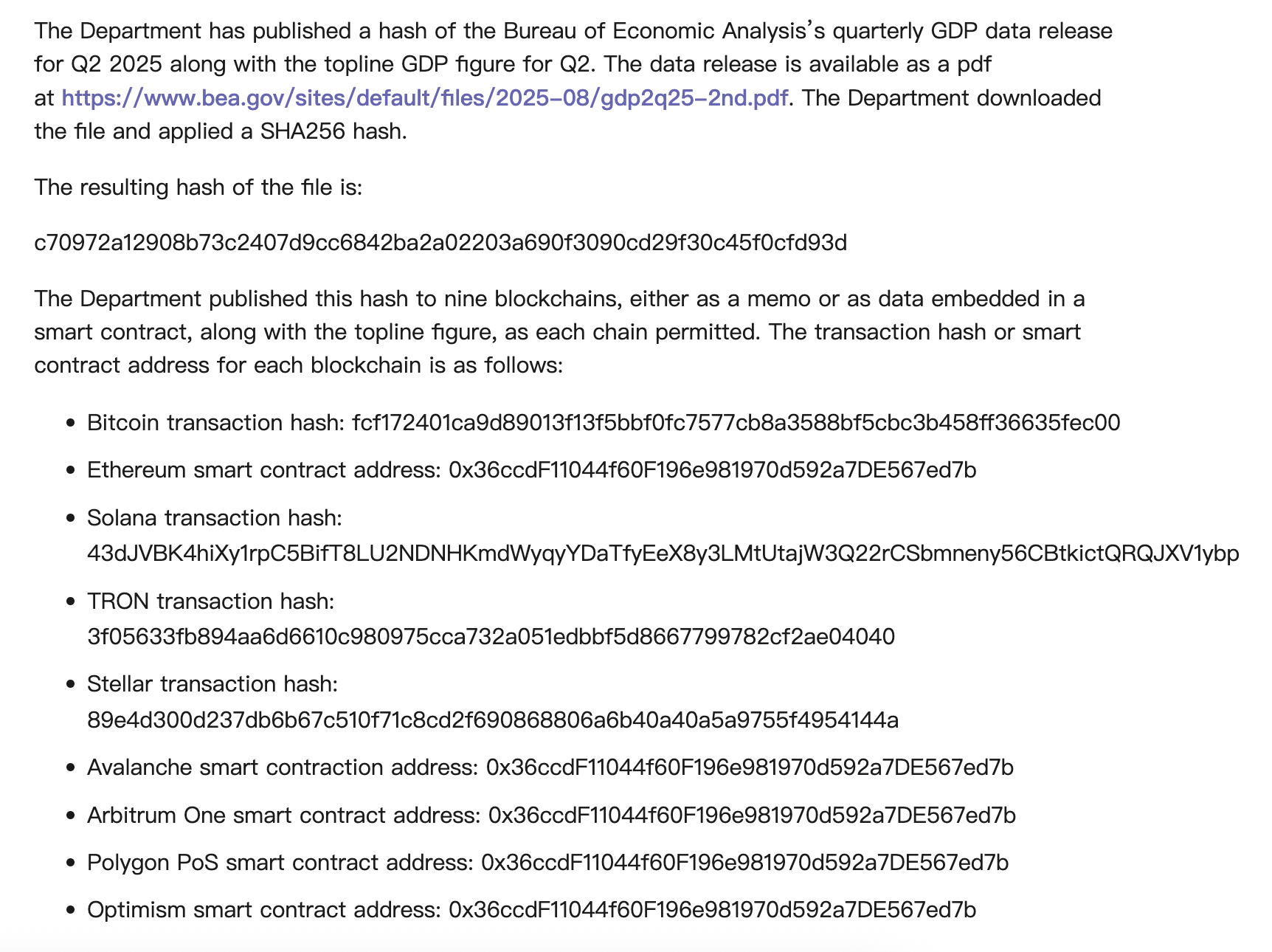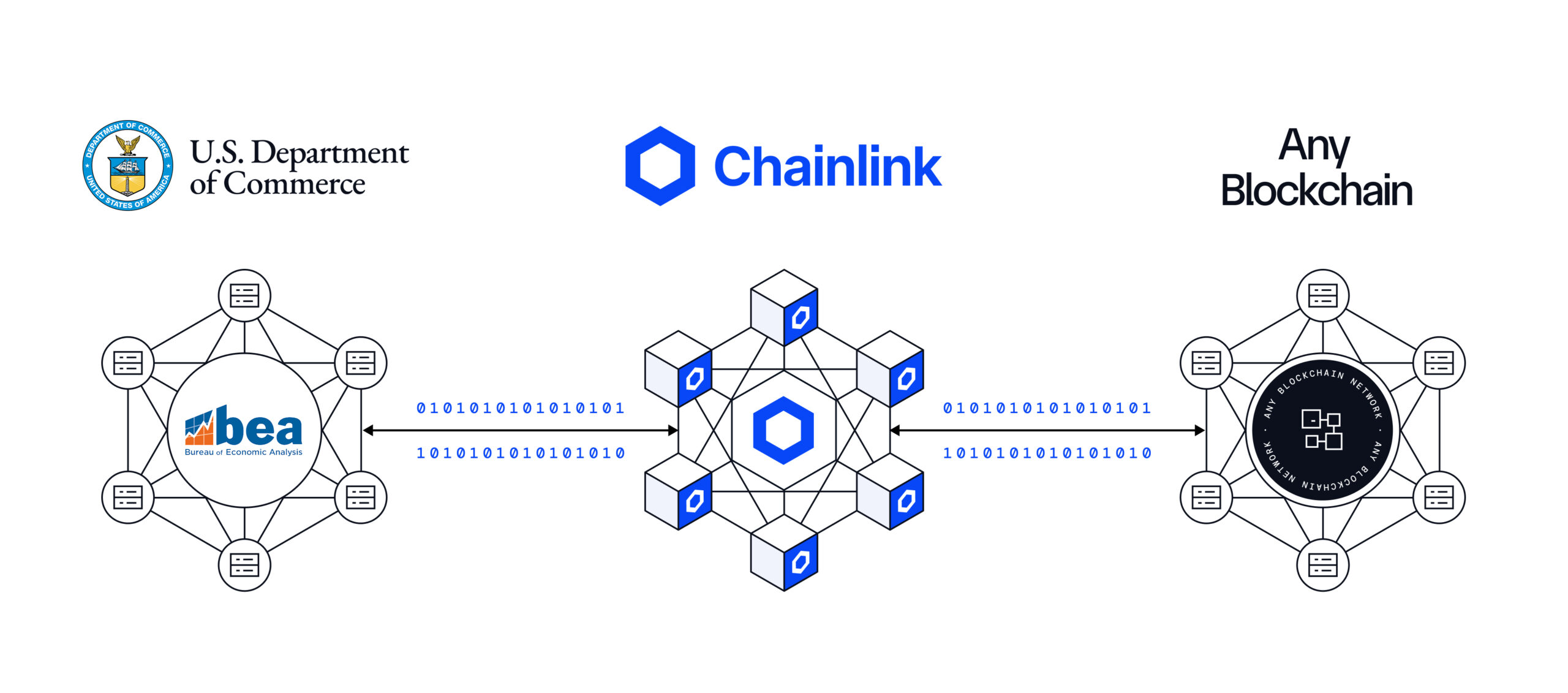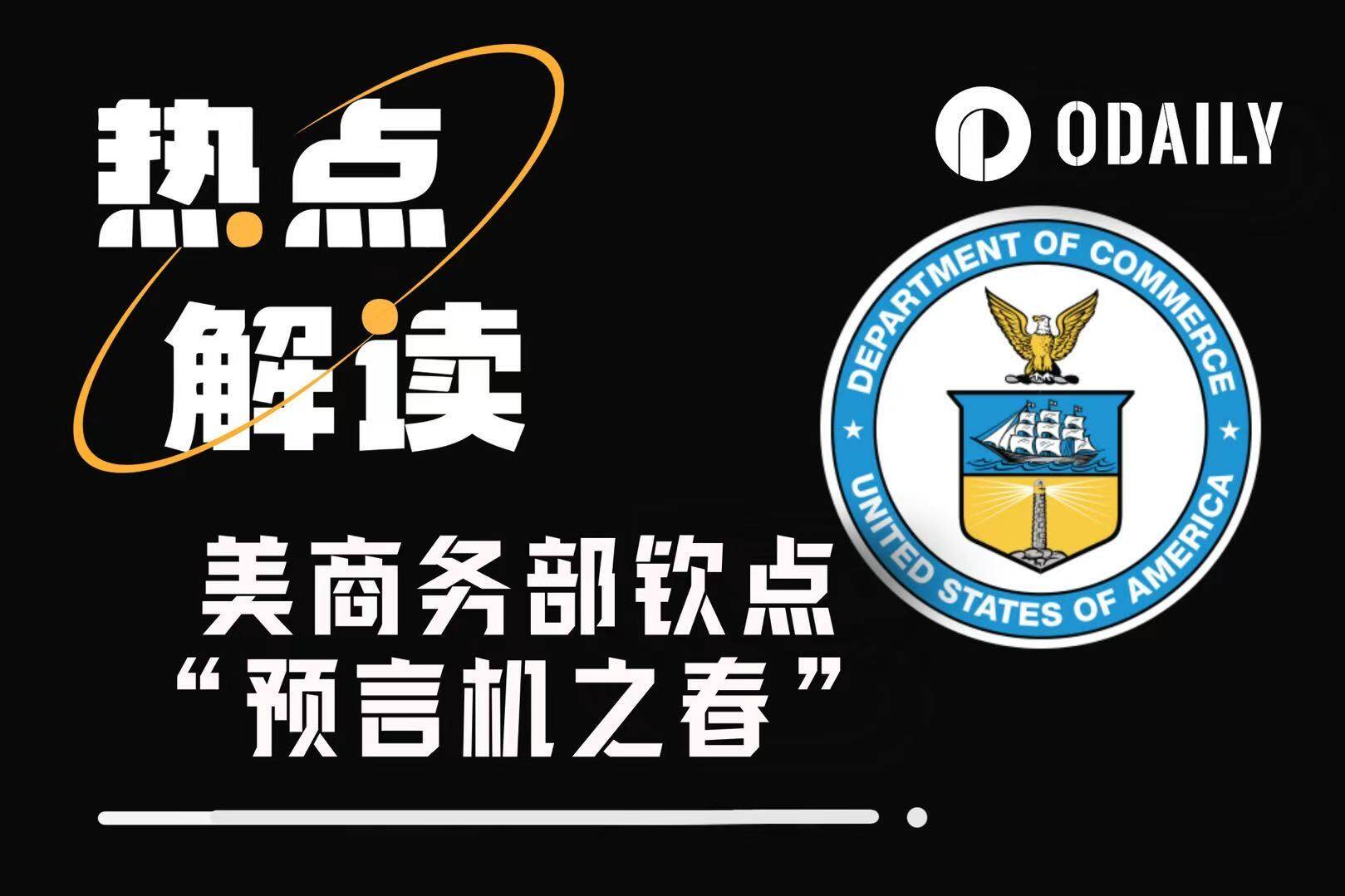Original|Odaily Planet Daily (@OdailyChina)
The spring of RWA (Real World Assets) is still brewing, but the oracle track has already entered a period of explosion.
Last night, the U.S. Department of Commerce officially announced that it will put macroeconomic data on-chain, mentioning: "Starting in 2025, quarterly GDP data will be published on nine mainstream blockchains including Bitcoin, Ethereum, and Solana; the data will also be further disseminated through oracle projects Pyth and Chainlink; exchanges such as Coinbase, Gemini, and Kraken will assist in the release."
After the announcement, the two oracle tokens LINK and PYTH quickly surged. According to OKX market data, PYTH's 24-hour increase once exceeded 100%, currently reported at $0.22; LINK's short-term increase approached 5%, now reported at $24.22. Odaily Planet Daily will briefly summarize and analyze this below.
U.S. Department of Commerce Takes Action, RWA Track Welcomes "Model Case"
As the head of an important department of the current U.S. government, U.S. Secretary of Commerce Howard Lutnick previously played a key role in promoting the establishment of a BTC strategic reserve by the U.S. government. With the assistance of U.S. Treasury Secretary Scott Bessent and Executive Director Bo Hines, Trump officially signed an executive order in early March this year, urging the U.S. Treasury to establish a BTC strategic reserve.
From Howard Lutnick's previous external statements and actual actions, it is clear that this "macroeconomic data on-chain" initiative is undoubtedly another demonstration of his crypto-friendly attitude. Moreover, as an indispensable infrastructure component of the RWA track, the formal cooperation between oracle projects and the U.S. Department of Commerce may become a milestone event for the rapid development of the RWA track.
U.S. Department of Commerce Tests Data On-Chain, Still Aiming for "Crypto Capital"
According to official news from the U.S. Department of Commerce, "Starting from the July 2025 data, actual Gross Domestic Product (GDP) data will be published on the blockchain. According to the revised estimates released by the U.S. Bureau of Economic Analysis, the GDP annual growth rate for July 2025 is 3.3%. This is the first time a federal agency has published such economic statistical data on the blockchain, and it is also a new way for the Department of Commerce to protect federal data and promote public use through innovative technology. Through this milestone work, the Department of Commerce hopes to demonstrate the wide-ranging uses of blockchain technology and aims to showcase a proof of concept for all government departments, continuing the historic effort of the Trump administration to make the U.S. the 'world's blockchain capital.'"
U.S. Secretary of Commerce Howard Lutnick praised: "We are making the economic truth of the United States immutable and globally accessible, thereby historically solidifying our position as a global blockchain center. And everyone must admit that a 3.3% GDP growth is impressive."
It is evident that the U.S. Department of Commerce has two layers of intentions with this move: one is to leverage the openness and transparency of blockchain technology to enhance the credibility of government data; the other is the strong demonstration effect, which aims to clear obstacles for more government departments and organizations related to the U.S. economic system to adopt blockchain technology, thereby further promoting the large-scale adoption of blockchain technology and crypto infrastructure.
While it seems to be about putting macroeconomic data on-chain, its deeper impact lies in the new development opportunities for the RWA track based on oracle projects, further promoting the on-chain of real-world assets, ultimately contributing to the U.S. government's vision of becoming the "crypto capital."
Moreover, the release of the hash values of the related data opens up imaginative possibilities for future data on-chain and asset on-chain.

U.S. Department of Commerce Releases Data On-Chain Hash Value Information
Macroeconomic Data On-Chain, Driving More Crypto Use Cases
According to Chainlink's official announcement, the relevant data indicators from the U.S. Department of Commerce include actual Gross Domestic Product (GDP), Personal Consumption Expenditures Price Index (PCE), and actual final sales to domestic private purchasers. This move will bring a series of innovative use cases to the blockchain market, including:
- Automated trading strategies
- Enhancing the composability of token assets
- Issuing new types of digital assets
- Building crowdsourced intelligent real-time prediction markets
- Transparent dashboards powered by immutable data
- DeFi protocol risk management based on macroeconomic factors

Data On-Chain Path Diagram
Additionally, Pyth Network's official announcement mentioned: "After the cooperation with the U.S. Department of Commerce is established, smart contracts will replace paper contracts, and once on-chain data is verified by Pyth, it will ensure the security of real-world transactions ranging from tokenized securities to entirely new and unimaginable innovations."
As a result, DeFi, stock tokenization, on-chain prediction markets, and new data RWA tracks will welcome new opportunities. After all, in the current rapid development of AI applications, data has become an important asset and resource, and will serve as a crucial raw material for more crypto projects.
For the U.S. government and the Department of Commerce, this move can also be seen as a key effort to enhance public information system confidence using cryptographic tools, which can be described as "a small step for crypto mass adoption, a giant leap for the security and transparency of public information systems."
Moreover, crypto exchanges have also become key partners in this on-chain data release.
Coinbase, Gemini, Kraken All Participate, Covering Data On-Chain and Release
It is worth mentioning that the three major U.S. crypto exchanges, Coinbase, Gemini, and Kraken, also participated in this macro data on-chain initiative. According to official statements, they are described as "assisting in the report release."
I speculate that the three exchanges may assist the U.S. Department of Commerce in handling related crypto transactions, such as covering blockchain network fees (like gas fees or transaction fees) through purchases using cryptocurrencies like Bitcoin, ensuring that macro data is smoothly recorded on-chain; oracle projects like Chainlink and Pyth Network provide infrastructure support, result confirmation, and subsequent maintenance.
In the future, Chainlink, Pyth Network, and others will have a new B2B client (the U.S. Department of Commerce); crypto exchanges may gain a new on-chain data access right, providing new data sources for more RWA projects, and U.S. crypto RWA projects like Ondo Finance and Plume may welcome a new round of explosion. Nevertheless, the specific impact of this "macroeconomic data on-chain" initiative has sparked some controversy.
Discrepancies in Official Statements Lead to Controversy: Who is Right and Who is Wrong?
The core focus of the controversy mainly lies in the "on-chain record discrepancies" between Chainlink's official announcement and the U.S. Department of Commerce's public announcement.
It is understood that the U.S. Department of Commerce announced that the first batch of GDP on-chain public chains includes: "Bitcoin, Ethereum, Solana, TRON, Avalanche, Arbitrum, Polygon, Optimism, Stellar," among nine public chains; while Chainlink announced that the first batch of GDP on-chain public chains includes: "Arbitrum, Avalanche, Base, Botanix, Ethereum, Linea, Mantle, Optimism, Sonic, and ZKsync," among ten public chains.

U.S. Department of Commerce Official Information

Chainlink Official Announcement
From the existing information, the U.S. Department of Commerce provided specific blockchain network hash values, while Chainlink emphasized the macro data-related indicators and specific use cases from the U.S. Department of Commerce, without providing corresponding blockchain network information records, or merely as potential networks for future cooperation. As of the time of writing, the prices of tokens like Mantle (MNT) and ZKSync (ZK) have not shown significant increases.
Additionally, according to Chainlink's official statement, the relevant data will be updated monthly or quarterly (depending on the situation); while Pyth Network's statement indicates that "Pyth will initially provide quarterly GDP releases retroactively for five years, and Pyth's contributors expect to expand this plan to support a broader economic data set." It is currently unclear whether there are certain differences in the cooperation content between both parties and the U.S. Department of Commerce.
Regardless, this macroeconomic data on-chain initiative has stimulated the prices of LINK, PYTH, and other tokens in the short term, but whether it can bring greater positive stimulation to projects like ONDO and PLUME remains to be seen over time.
免责声明:本文章仅代表作者个人观点,不代表本平台的立场和观点。本文章仅供信息分享,不构成对任何人的任何投资建议。用户与作者之间的任何争议,与本平台无关。如网页中刊载的文章或图片涉及侵权,请提供相关的权利证明和身份证明发送邮件到support@aicoin.com,本平台相关工作人员将会进行核查。





